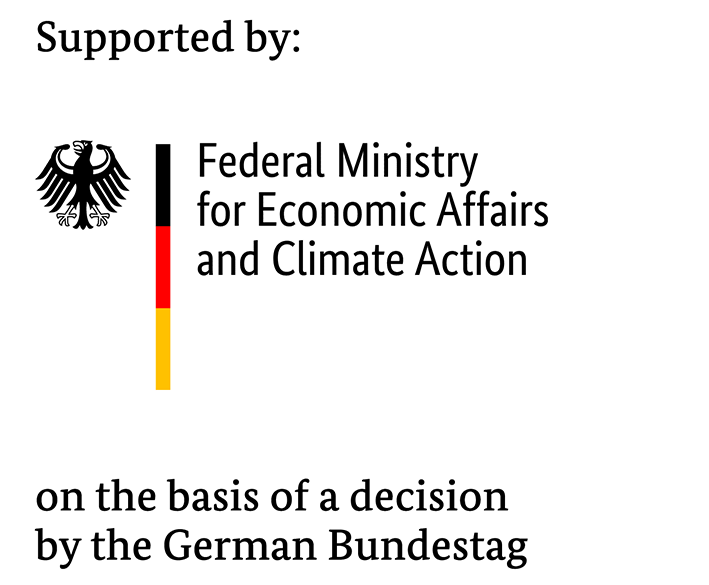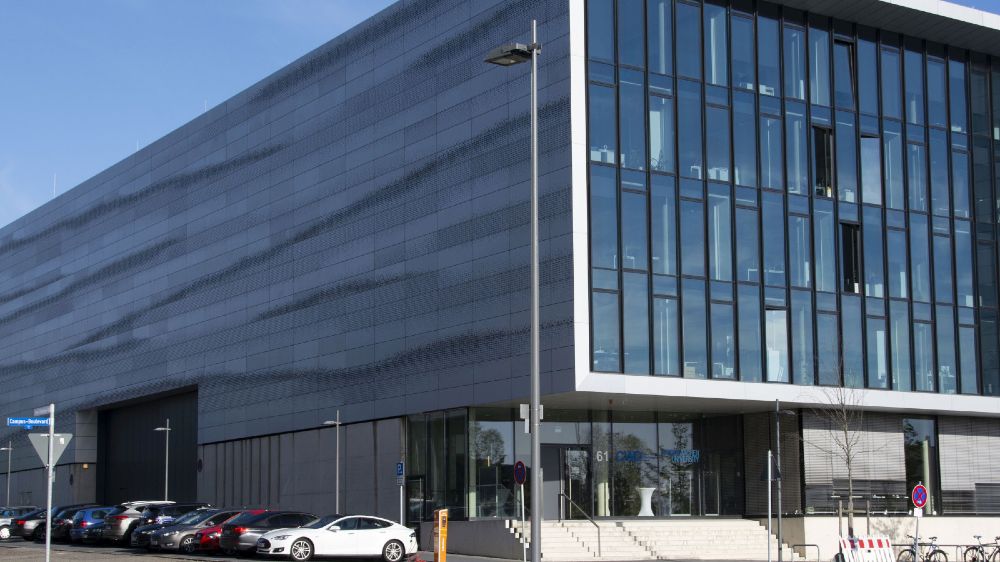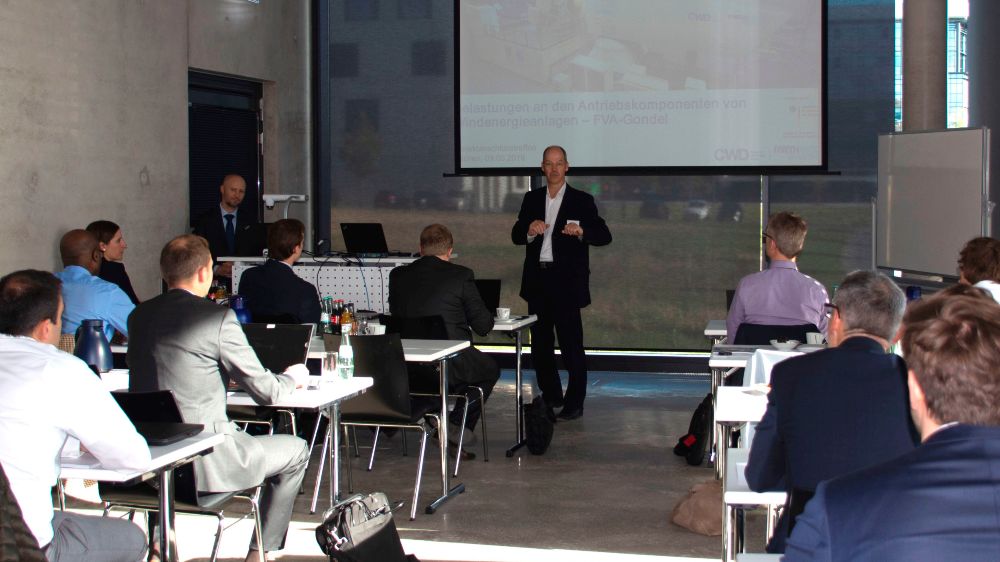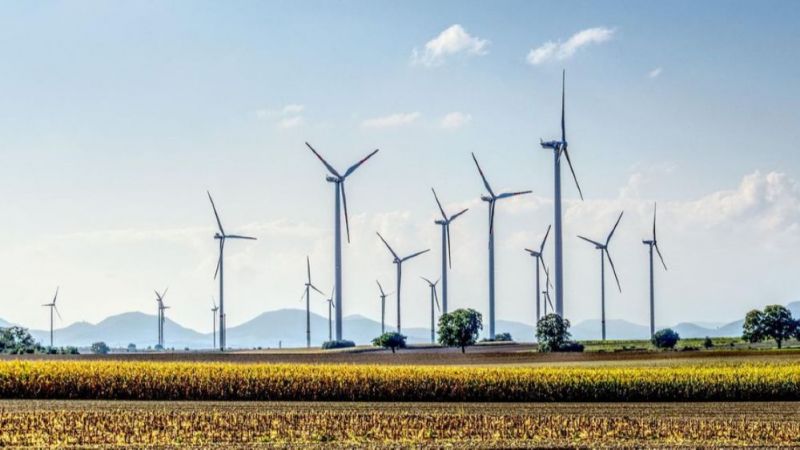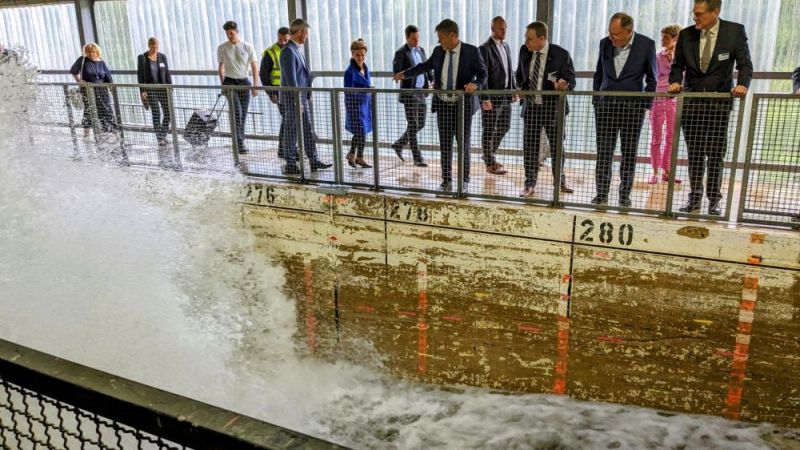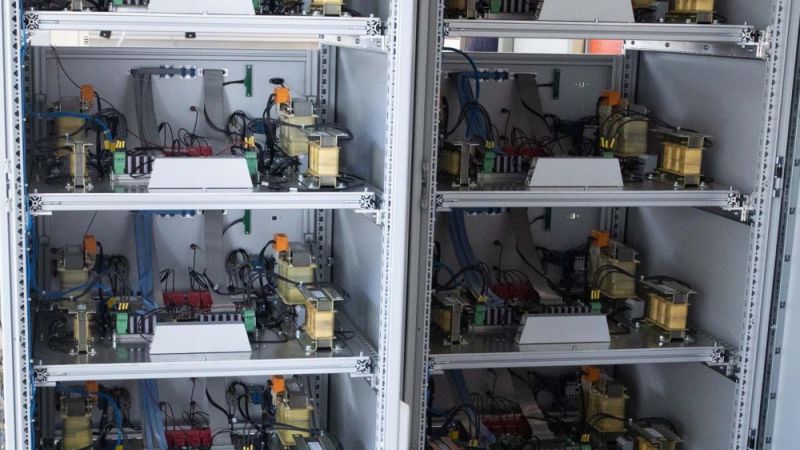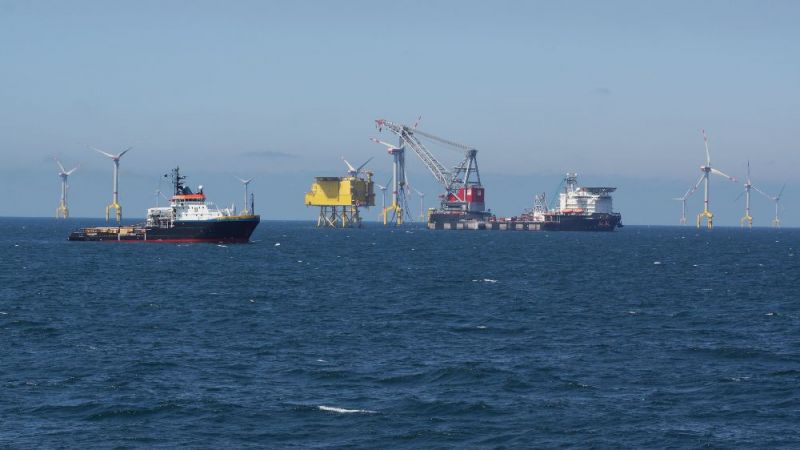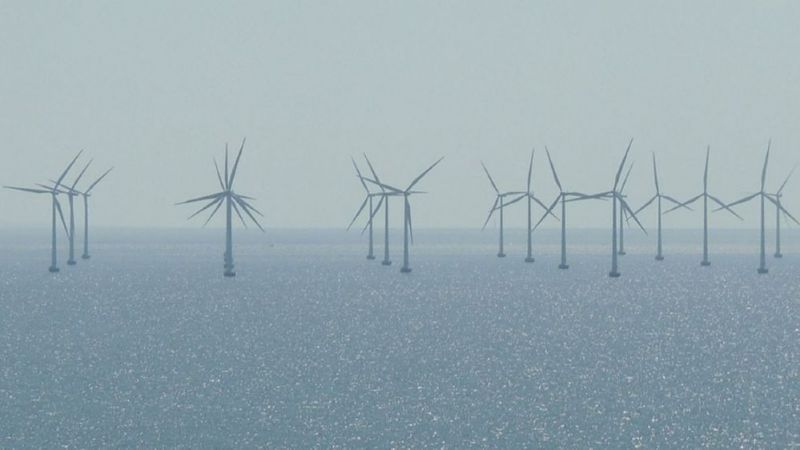Wind power
Optimizing the drive train of a wind turbine
A “transparent” wind turbine nacelle with around 300 built-in sensors formed the focus of the FVA Nacelle research project conducted by scientists at RWTH Aachen University. Together with industry representatives from the Drive Technology Research Association (FVA) and Siemens AG, they have researched how the drive trains for wind turbines can be optimised so that they run more reliably and thus generate more electricity with lower service costs.
During the first months of the research project, a research nacelle consisting of components from various suppliers was built at the Centre for Wind Power Drives (CWD) at RWTH Aachen University. “That was extremely exciting,” recalls project coordinator Professor Georg Jacobs, looking back at the closing event for the research project in May 2019. The jointly designed nacelle enabled medium-sized component suppliers to participate in the research project. In addition, the proprietary design of the nacelle meant that the company secrets of individual FVA member companies were protected. During assembly, the experts integrated 300 sensors that provided considerable information from the components over the following weeks and months. “In the end, we collected around 3.5 terabytes of measurement data,” reports Georg Jacobs proudly, which were or will be evaluated.
Test operation on the nacelle test rig at the Centre for Wind Power Drives in Aachen, Germany
The research nacelle was not tested high up in an open field, but on the 4-megawatt system test rig – which was comprehensively extended for the research project – at the CWD in Aachen. Real wind conditions can be simulated – including turbulence and storm strengths – in the large test hall on the Melaten campus in Aachen. During the tests, bearings, gearboxes and the generator reached their load limits. The grid simulator also enabled them to generate voltage dips and investigate their effect on the research nacelle.
The measurement results from the test series not only help to optimise individual components, but also allow conclusions to be drawn about gearbox or power electronics models. With the help of this “digital twin”, experts can evaluate planned design changes to the nacelle without these having to be converted into reality.
Follow-up projects have already started
Even if the research project funded by the German Federal Ministry for Economic Affairs and Energy to the tune of around 4.4 million euros has been completed, the FVA nacelle will continue to have to defy artificially generated storms. Several follow-up projects have already been started. In the CertBench research project, for example, various electrical fault situations (FRT tests) are being compared and evaluated on various test rigs. The aim is to ensure that complex and expensive field tests can be replaced by laboratory tests on test rigs such as at the CWD. In the Pronowis project, the development of sensor-supported processes will optimise the operation of wind turbines with the aim of reducing the risk and number of white etching cracks (WEC)-related failures, and thus increase turbine availability.

